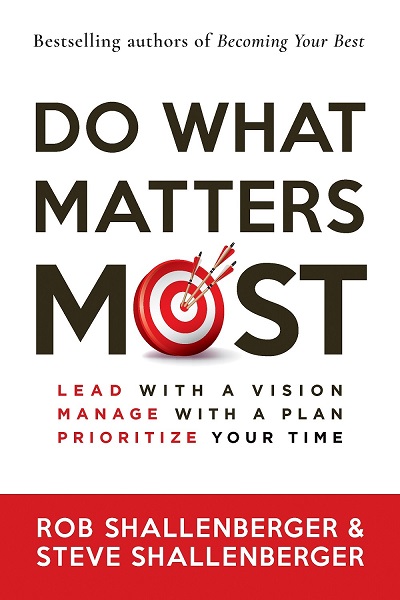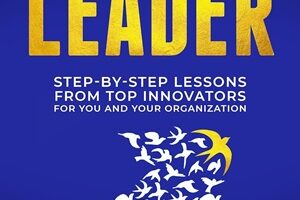
With his background in the air force, combined with his father’s veteran experience in strategy and management, Rob Shallenberger and Steve Shallenberger prove a formidable duo. They’re clear-cutting, to-the-point, and all-around seem like solid, informed guides to helping the theoretical you lead a happier, better, and more productive lifestyle than ever before. As made clear by their consistent, researched descriptors, it doesn’t matter if you’re a budding entrepreneur, hardened company CEO, long-term company employee, or even just a gentleman on the street. The methodologies of prioritization and productivity Shallenberger and Shallenberger promote will help you primarily get the most out of your life, whatever the case may be.
“One of the common threads that bind so many people together is a desire to make a difference, be more productive, perform at a higher level, and prioritize what matters most in their lives,” write Shallenberger and Shallenberger in the preface of their new book, Do What Matters Most: Lead with a Vision, Manage with a Plan, Prioritize Your Time. “In our research of more than 1,260 managers and executives from more than 108 different organizations, 68 percent of them felt like their number one challenge was how to prioritize their time.
At the same time, 80 percent did not have a process to plan or focus on what matters most.” Indeed, it’s unusual to live a life where your personal and professional activities are laid out before you, or where you take an active role in programming their relevancy rates based on necessity. A few rarities who have self-imposed their own, individualized prioritization plans upon every aspect of their lives include tech moguls like Elon Musk and Bill Gates respectively. Musk in particular stands out, having created a meticulously timed set of scheduling blocks that maintain ninety percent of his waking hours being dedicated to work at Tesla and SpaceX respectively. Not everyone however can maintain such a disciplined regime, therefore necessitating the productive but practical nuts and bolts making up the intrapsychic ideology Shallenberger and Shallenberger swear statistically by.
AMAZON: https://www.amazon.com/Do-What-Matters-Most-Prioritize/dp/1523092572
In this vein, arguably one of the book’s most important chapters is the third, entitled The Power of a Personal Vision. In the spirit of their other published work, Shallenberger and Shallenberger articulate the ultimate spine of their philosophy, but they do so in a way that is more holistic and personalized than before. Citing exemplary profiles of various famous historical figures, father and son write, “Imagine how great it would feel to have a sense of purpose, clarity, and direction. To wake up in the morning excited to face the day. High-performing employees and great leaders have such a vision. It is what provides fuel to the fire of their lives.”
Providing analogous, real-life examples of modern day success stories is an especially effective tactic for this sentiment. It makes you actually want to study the material they’re presenting, adding a sort of visceral potency to the entirety of the specific accomplishments Do What Matters Most by its presence alone ensures. “Your personal vision, which lies inside of you, will change your world and all those around you as it deeply blesses and influences your life for good,” Shallenberger and Shallenberger write. “Once finished, your vision will become a wellspring of motivation and serve as your internal compass. It will become the guide for your roles and goals, and then later, for your pre-week planning.”
Cyrus Rhodes














